Thu, 02 Oct 2014 . Last updated Fri, 13 Mar 2015 16:23
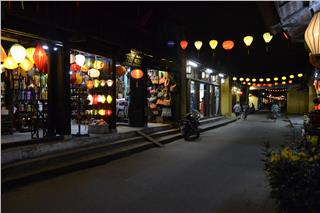
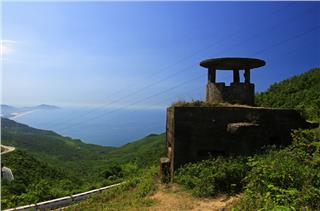
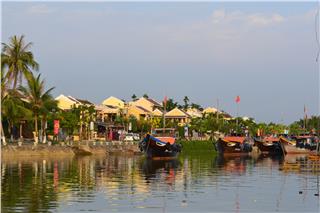
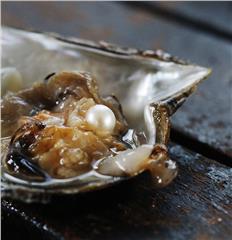
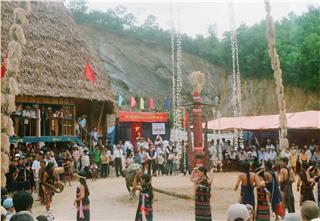
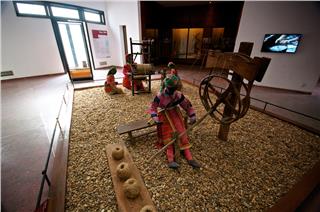
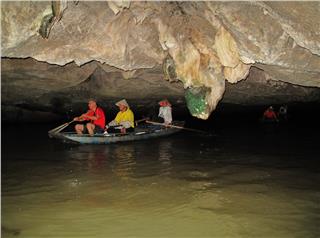
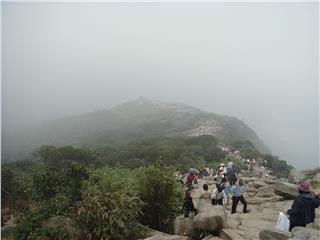
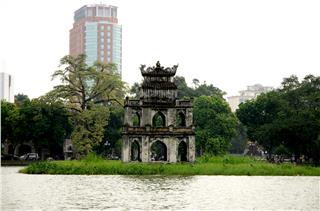
A lot of people have written about and cannot hide their emotion when they talk about Hoan Kiem Lake and Ngoc Son Temple. I’d like tocite the following simple words to describe the beauty of this scenic spot of the capital city. “Hoan Kiem Lake and Ngoc Son Temple are “must see” places in Hanoi”. The lake is like a wonderful water mirror and the temple adds the beauty to it in terms of both space and time.” That’s why they have been recognized as special national relics. Be with us to discover the unique cultural traces of these famous spots.
Guom Lake (Sword Lake) is known as the lake of legends and history. It has aroused of emotions in the admirers of all times. Nguyen Van Sieu, a poet in early 20th century depicted it in some verses as follows: There is a cup inside an islet where the water and the heaven meet. A fishing boat sees off its guests then returns to sleep by the flowers. Sword Lake is the very soul of the country in existence for thousands of years, a base for the people to take pride in the history built by the people in the past and the people at present. Sword Lake can be termed as a sacred space of Hanoi and of Vietnam. The legend has it that it used to be called Luc Thuy Lake (Green Water Lake) since the water was green all year round.
During the war against the Minh invaders, King Le Thai To incidentally got a precious sword. After 10 years of continuous struggling, the King finally defeated the Chinese and reclaimed the nation’s independence. After that, he set up the capital in Thang Long. Once a nice day, while boating on Luc Thuy Lake, a large turtle came towards him. It immediately grabbed the sword with its mouth and submerged. The King realized that the God must have lent him the sword to drive back the enemy, so when his nation was free, the sword had to be returned. Hence King Le Thai To named the lake “Hoan Kiem” (Lake of the Returned Sword) after this.
The lake name reflects a great philosophy that has surprised many people. That’s the philosophy of peace which came up in the 18th century. Returning weapons to the Gods after wars is what the lake name indicates. So, its full name is “Tra Guom” or “Hoan Kiem” Lake (the lake of Returned Sword). That’s the profound psychology to be hidden in this famous relic site of Thang Long. “Rua” (Turle) Tower is closely associated with Sword Lake. It has neither glorious history nor unique architectural features. Yet, it exists as a symbol of Sword Lake and of Hanoi. It locates on Rua Mound which is only 0.6m above the lake level. It was considered a mountain according to the ancient Feng Shui. So, it was called Quy Son (Turtle Mountain) in comparison to Ngoc Son (Jade Mountain). The rectangle-shaped tower has its length-facets facing the East-West direction and its width-facets turning to the North-South direction. It is a 3-storey tower with one top.
Ngoc Son Temple is a unique architectural work that contributes to the sacred space of Sword Lake. It is erected on Ngoc Mountain, The Huc Bridge, Tran Ba Pavilion, and Rua Tower are accompanied with Ngoc Son Temple. They make the landscapes more beautiful. It is widely known that Ngoc Son Temple is located on an island in Sword Lake. The ancient temple seems to get nicer in a space of both water and mountain.
I’d like to quote the words of researcher to describe this unique temple. “To many Hanoians, Ngoc Son Temple in the middle of Sword Lake” is the unique architectural work that locates in a space with mountains, a lake, towers, bridges, pavilions, ancient trees, year-round flowers, religious values, legends and historical values.”
The temple is located in Hang Dau Street. Its gate consists of four brick columns and two medium-high walls. There are parallel sentences in Han characters carved in each column, thus enhancing the ancient of the relic, giving visitors a better understanding of its history and values. On the two walls, there are Han characters of “Phuc” and “Loc” which are carved in red as the wishes of blessings and good lucks. Above these characters are tow epigraphs. “Ngoc u tu” (Pearl in here) is caved in one side. The other side carves “Son nguong chi” (Turn face upward to see mountain). Pearl indicates nice, noble virtues. Meanwhile, high mountain indicates the talented and righteous people.
When we step over the gate, we can see a stone tower erected on a stone mountain whose diameter is 12 meters and height is 4 meters. The tower is square-shaped and 5-storey. On the fifth story lies a 0,9m quill pen. That’s why the tower is called “But” (Quill pen) tower. The stone mountain is called “Doc Ton”. “But” Tower represents literature. Han characters “Ta Thanh Thien” are carved vertically in the Northern face of in three storeys in the middle.
Many people tried to uncover the profound meaning of those characters. Tran Dang Khoa depicted their meaning in a poem of his. According to him, they mean “to write on the blue sky”. Yet, some historians held a rater negative thought towards them. According to them, “Ta” means “da” (fight). So the words mean fighting against Thanh Dynasty. In fact, Than Sieu built it to show the strong will and beautiful soul of Thang Long people. So, “Ta Thanh Thien” should be understood as “writing on the blue sky”. A small temple called “Son than” (Temple of Mountain God) is found at the foot of the mountain. This creed dates back to the Primitive Time when stone was worshipped. Another noticeable item is the small stele carved with five characters “Thai Son thach cam duong”. It aims to drive away ghosts and evils, preventing them from approaching the temple.
Passing the But Tower, You will come to the second gate that consists of two smaller side gates with two storeys and eight roofs each. One gate has the image of a dragon in the posture of waiting for a school of fish and the two Chinese characters of “Long mon”. The other has the image of a tiger and the Chinese characters “Ho Bang”. The images depict ancient anecdotes. According to Oriental culture, “Long mon” indicates the success in examinations and “Ho Bang” implies the people who attained doctoral title in the feudal dynasties. They symbolized the academic achievements in Confucianism.
When one passes these two gates, he will reach the third gate. Different from the first two gates, this one consists of a high wall and red painted doors. A stone inkstand is put at the top. So, it is called “Nghien dai” (Inkstand Monument). Quill pen must be accompanied with an inkstand. This is a pen to write on the blue sky. So the inkstand is created to be in pair with that pen. It os made of a big jade and peach-shaped. It is supported by here frog statues. Especially, a poem by Nguyen Van Sieu was carved on the inkstand.
Then comes The Huc Bridge. “The” means “to stay” and “Huc” means “morning sunlight”. The name may be given when the city had no high-rise buildings, so rays of morning sunlight could stay on it for long. It was initially made of planks vertically arranged on some columns and had no banisters. The bridge was beautified after several renovations. Now, it is curved resembling a rainbow and painted red to suit its name “The Huc” (the place where the morning sunlight stays). After passing the bridge with 15 arches, you will reach Dac Nguyet pavilion (Moon Contemplation Pavilion) with two storey and three Chinese characters “Dac Nguyet Lau” depicting from the ancient verse: “Can Thuy lau dai tien dac Nguyet” (literary meaning: this is the first place to see the moonlight) because the pavilion is high and surrounded by water. So, it is not hidden from view. So, the one who contemplates the moonlight from here is like to embrace the moon. Tran Ba (Pavilion against Waves) is an impressive architectural work in the campus of Ngoc Son Temple. It is nice and poetic. This square-shaped pavilion was built at the same time with But Tower and the Inkstand Monument (from 1865 to 1866).
Tran Ba Dinh literarily means the Pavilion against Waves and Storms. It was built to prevent the bad impacts of exotic cultural factors on the noble, age-old culture of Thang Long in the middle of the 19th century.
In front of the Ba Dinh Pavilion is three temples, the central parts of the complex in terms of position and worshiping belief. The first temple consists of three compartments. It is built with two storeys and four roofs. It is the front house that has “tan”. “tan” (sunshades), incense table, and gold-planted statues of a couple of vernal hanging parrots. The second three-compartment temple is also built in the same style. It is the “cung ngoai” (Front palace). An incense table, worshipping items, and altar are placed in the second compartment. There are three layers of statues here. The outer layer has the statues of Quan Vu and his two Generals namely Chau Xuong and Quan Binh. La To statue is placed in the middle of the second layer, on two sides of which are the statues of Thien Khoi and Thien Viet. The statue of Van Xuong on the throne is put in the innermost layer, which is also a scared worshipping space. They are the Taoist notables originated from China but adjusted to suit the Vietnamese spiritual life.
The third temple is the sanctuary where Tran Hung Dao is worshipped. It is a sitting statue with a hat with the carving patterns of the moon and two dragonflies in the middle. The statue has square face, big ears. He puts on mandarin costume decorated by the patterns of dragons and clouds. His left hand puts on his thigh and the other hand holds a book. There are two worshipping places at his back. The place to the East worships the Gods of Mountain and Water, Kitchen Gods and the temple founders. In the West are the votive tables worshipping “Tran trieu thuong phu Hung Dao dai vuong”.
The worship of Quan Cong and Quan Vu is still practiced here. The worship of Van Xuong appeared to match this. Van Xuong is the Literature and Culture God. Many people also pay attention to worshipping Tran Hung Dao. Besides, there is the worship of La To, whose real name is La Dong Tan, the God of Health. Few people have a right distinction of these Gods to make proper rites.
The ancient pagoda on Dinh Tien Hoang Street is deeply engraved into the mind of every Hanoian. But few know that it is the remaining of Bao An Pagoda complex built hundreds of years ago. Hoa Phong Tower is more than 100 years old. It used to be part of Bao An Pagoda, also known as Sung Hung, Lien Tri or Quan Thuong Pagoda. The pagoda complex was damaged over time and only Hoa Phong Tower remains. It is a four-door tower. There are four big doors in the base floor which were built on four big pillars. The second and third storeys are square-shaped. The third storey is smaller. A wine bottle is put at the top of it. This is the special feature of Buddhist temples. Images of eight trigrams are carved on the two facets to the East and the West of the storey. They took root from I Ching Book of Confucianism and were adopted by the Taosim as its symbol. So, Hoa Phong Tower is the meeting place of three religions: Confucianism, Buddhism and Taoism.
The statue of King Le is an important part of the Hoan Kiem Lake and Ngoc Son temple complex which has been recognized as a special national relic. The work is located in the campus of the No.16, Le Thai To Street. Passing the gate, one will reach the “Phuong dinh” (square house) with two storeys and eight roofs. Stones are arranged into the statue support. The support consists of three parts. The octagonal-shaped part is used to support the bronze statue of Le Loi. It imitates some architectural traits of Greece. The bronze statue of Le Loi is 1.2 meters high and in the standing position. It shows the respect of Hanoians to the national hero.
Ms. Ludemit who was a famous Bulgarian poetess and writer before becoming the Bulgarian Vice President talked about Ngoc Son Temple and Sword lake with a beautiful verse: “This is a nice flower basket in the heart of a city with lots of concrete works, so Ngoc Son Temple needs very much an elegant and colorful beauty, and it is Sword Lake”.
On December 9th 2013, the Prime Minister signed the decision to recognize Hoan Kiem Lake and Ngoc Son Temple as special national relics. This has confirmed again the position of these relics among the relics in the capital city of Hanoi and in the country. To Hanoians in particular and the Vietnamese people in general, Ngoc Son Temple and Sword Lake are both familiar and sacred, both realistic and mysterious. It is like the imprints of the past and the pride of the future generations. The legend can still be felt today. Hoan Kiem Lake and Ngoc Son Temple have been the witnesses of the life in this thousand-year-old land. At this moment, we suddenly remember some verses by poet To Huu.
Guom Lake is always blue
It exits with the country’s everlasting development.
Hanoi natives take pride in the cultural and historical values of the lake and the temple. They are combination of the Heaven and the human-being, of the architecture and the nature and represent the civilization of the capital and of the country. Whether or not, whoever come to Hanoi they never forget to stop and visit Sword Lake, Ngoc Son Temple and Rua Tower, because visiting Hanoi without visiting these places of interest in the capital is regarded as not visiting Hanoi at all. This has lain in the Vietnamese’s mind for good.
Source: VTC10 - NETVIET

 Đặt vé máy bay cho người Việt?
Bấm vào đây
Đặt vé máy bay cho người Việt?
Bấm vào đây
Our service uses cookies for technical, analytical and marketing purposes. See our Cookie và Privacy policies for more information. If you agree to this, just keep browsing.


